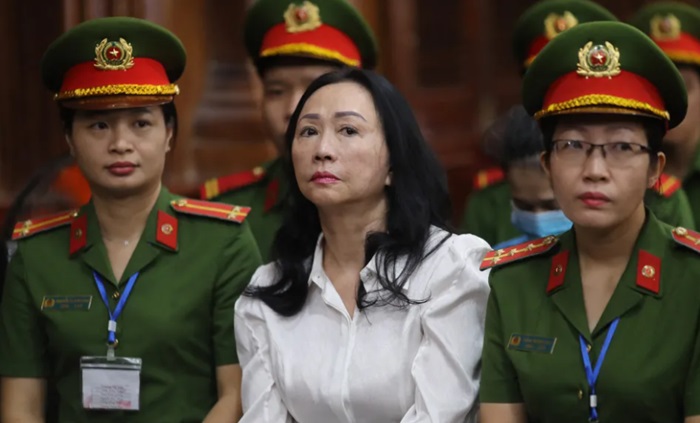
A Vietnamese tycoon has been sentenced to death by lethal injection over one of the greatest bank frauds the world has ever seen.
Billionaire Truong My Lan, 67, received her sentence on Thursday for looting one of Vietnam‘s top banks over the course of 11 years.
Prosecutors claimed she stashed cash from the bank in her basement for three years – an amount that would weigh up to an unbelievable two tonnes.
In a rare verdict, the property developer has now become one of the very few Vietnamese women to be sentenced to death for a white collar crime.
The verdict reflects the astounding extent of the fraud as Truong My Lan was found guilty of taking out $44 billion (£35 billion) in loans from the Saigon Commercial Bank.
That is approximately 9.36% of Vietnam’s 2024 GDP.
Dressed down from her usual lavish gowns and looks, Truong My Lan denied the charges against her.
She will now have to refund $27 billion, as per the court verdict, which prosecutors say may never be recovered.
“The defendant’s actions… eroded people’s trust in the leadership of the (Communist) Party and state,” read the verdict at the trial in Ho Chi Minh City.
Some think the death penalty is a way of encouraging the tycoon to return some of the missing billions.
In an oddly forthright manner, the usually secretive communist authorities went minute detail into Truong My Lan’s case.
In a “show trial” unlike any other in the communist era, officials revealed that 2,700 people were asked to testify, with 10 state prosecutors and some 200 attorneys participating.
The evidence was stored in 104 crates weighing a total of six tonnes, with 85 defendants tried alongside the billionaire.
Following a five-week trial in the economic capital of Ho Chi Minh City, 85 others await judgements and sentences on allegations ranging from bribery and abuse of authority to appropriation and violations of banking law.
Devil in disguise
Truong My Lan was raised in Ho Chi Minh City, then known as Saigon, by a Sino-Vietnamese family.
With a sizable ethnic Chinese population, it has long been the commercial backbone of the Vietnamese economy, going all the way back to when South Vietnam was still fighting communism and its capital.
She began her career selling cosmetics at market stalls alongside her mother, but once the Communist Party ushered in a phase of economic reform known as Doi Moi in 1986, she started investing in real estate.
She possessed a sizable portfolio of hotels and restaurants by the 1990s.
By 2011, as a well-known businesswoman in Ho Chi Minh City, Truong My Lan was able to coordinate the combination of three smaller, financially struggling banks to become Saigon Commercial Bank.
In Vietnam, it is illegal to own more than 5% of the shares in a bank.
However, the prosecution claims that Truong My Lan truly owned more than 90% of Saigon Commercial through hundreds of shell corporations and proxies.
They said that she appointed her own employees as managers and then gave them orders to grant hundreds of loans to the network of sham firms she controlled, all while abusing her power.
The sums extracted are astounding as 93 per cent of the bank’s loans came from her.
Prosecutors claim that starting in February 2019, she gave her driver instructions to take out 108 trillion Vietnamese dong—more than $4 billion (£2.3 billion)—in cash from the bank and stash it in her basement over a three-year period.
Even with Vietnam’s highest denomination bills, so much cash would weigh two tonnes.
She was also charged with giving lavish bribes to make sure her loans were never investigated. One of the defendants in the trial was a former central bank chief inspector who was charged with taking a $5 million bribe.
Le Hong Hiep, from the Yusof Ishak Institute in Singapore, told the BBC he was left completely “puzzled” by the scheme.
“Because it wasn’t a secret,” he said.
“It was well known in the market that Truong My Lan and her Van Thinh Phat group were using SCB as their own piggy bank to fund the mass acquisition of real estate in the most prime locations.
“It was obvious that she had to get the money from somewhere. But then it is such a common practice. SCB is not the only bank that is used like this. So perhaps the government lost sight because there are so many similar cases in the market.” (The Sun)

